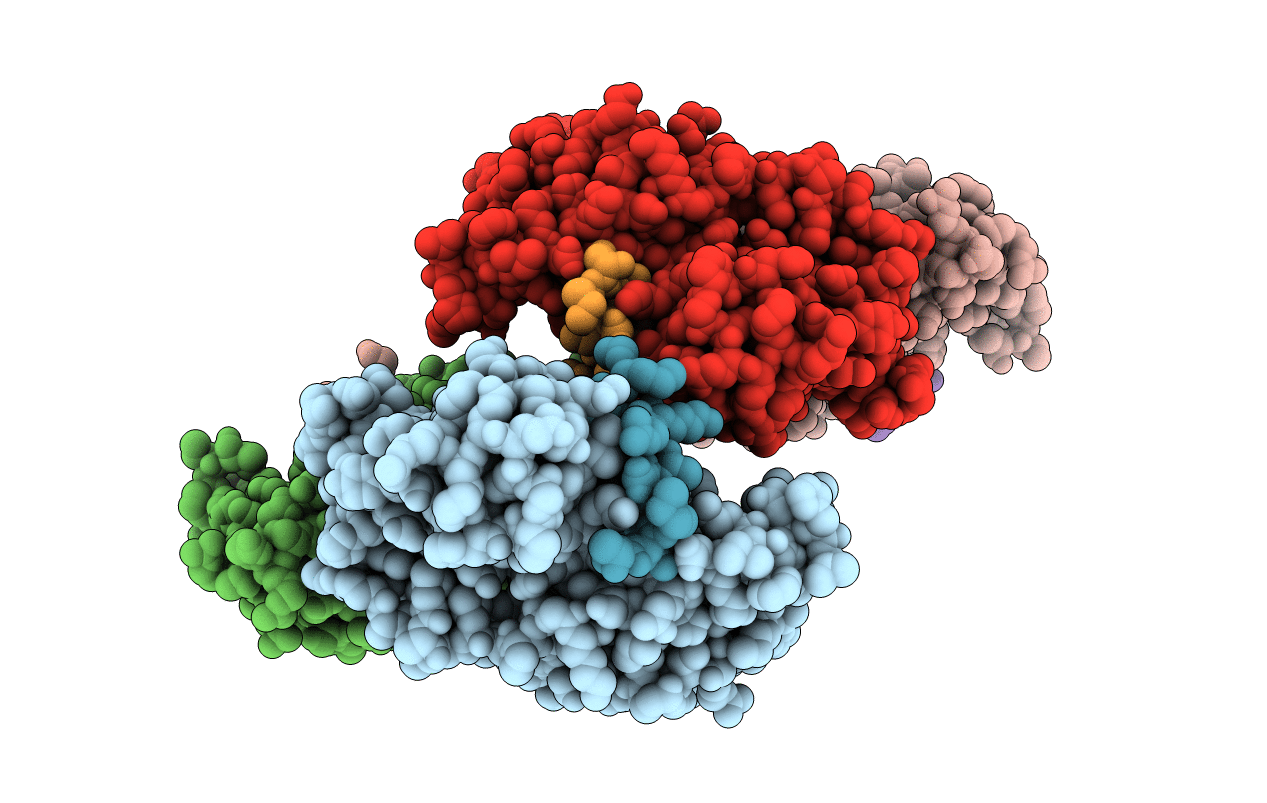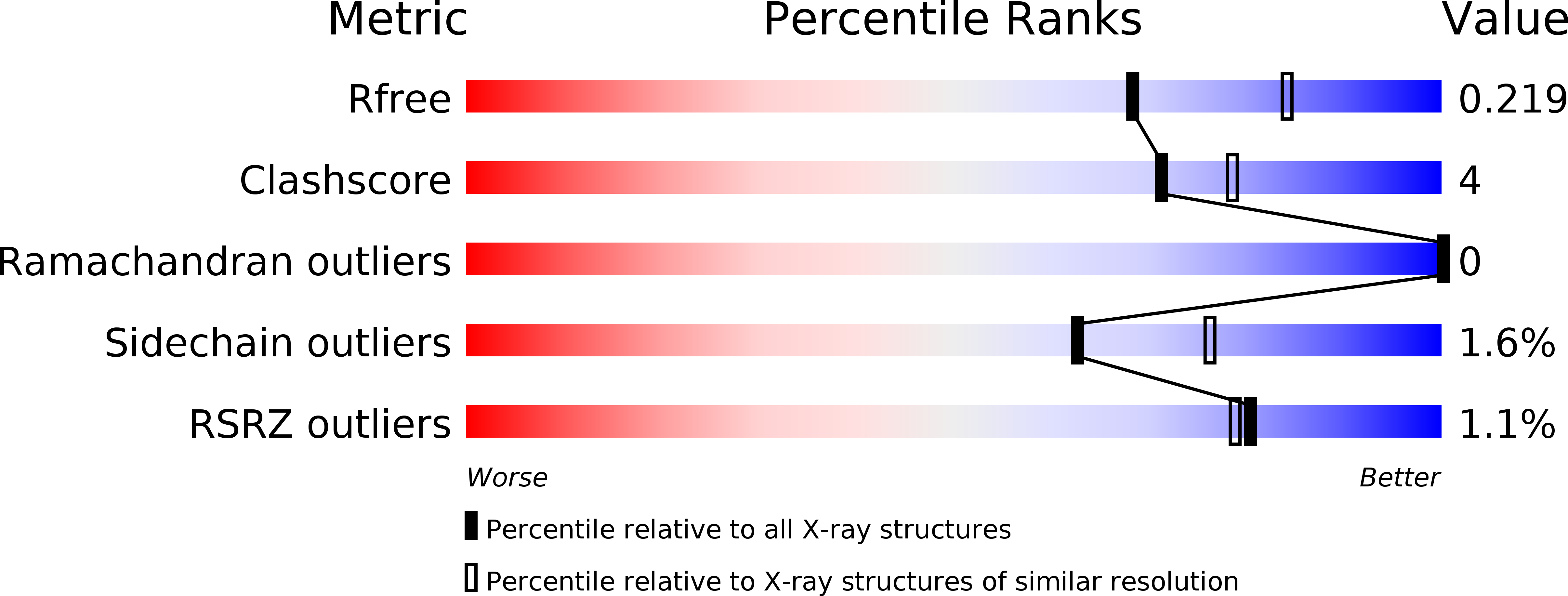
Deposition Date
2017-03-03
Release Date
2017-06-07
Last Version Date
2023-11-22
Entry Detail
PDB ID:
5X8Q
Keywords:
Title:
Crystal Structure of the mutant Human ROR gamma Ligand Binding Domain With rockogenin.
Biological Source:
Source Organism:
Homo sapiens (Taxon ID: 9606)
Host Organism:
Method Details:
Experimental Method:
Resolution:
2.20 Å
R-Value Free:
0.24
R-Value Work:
0.19
R-Value Observed:
0.19
Space Group:
P 1 21 1


